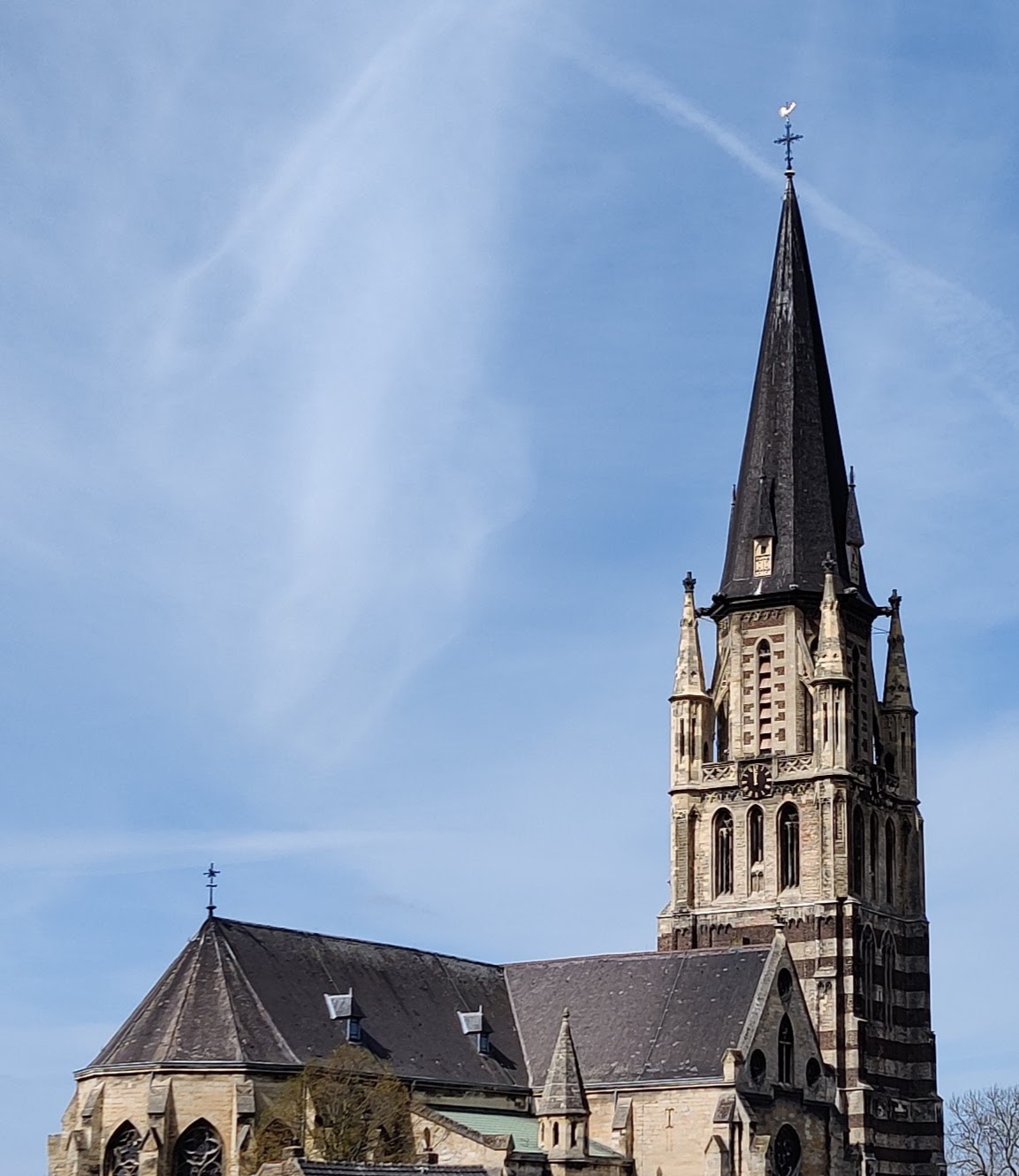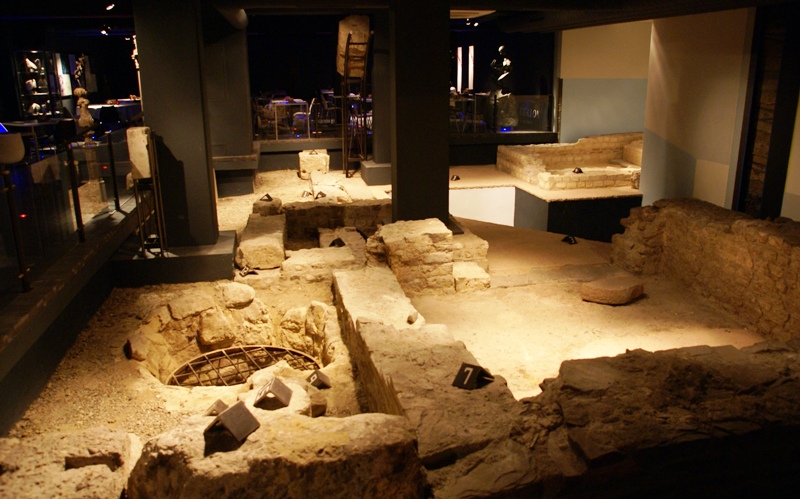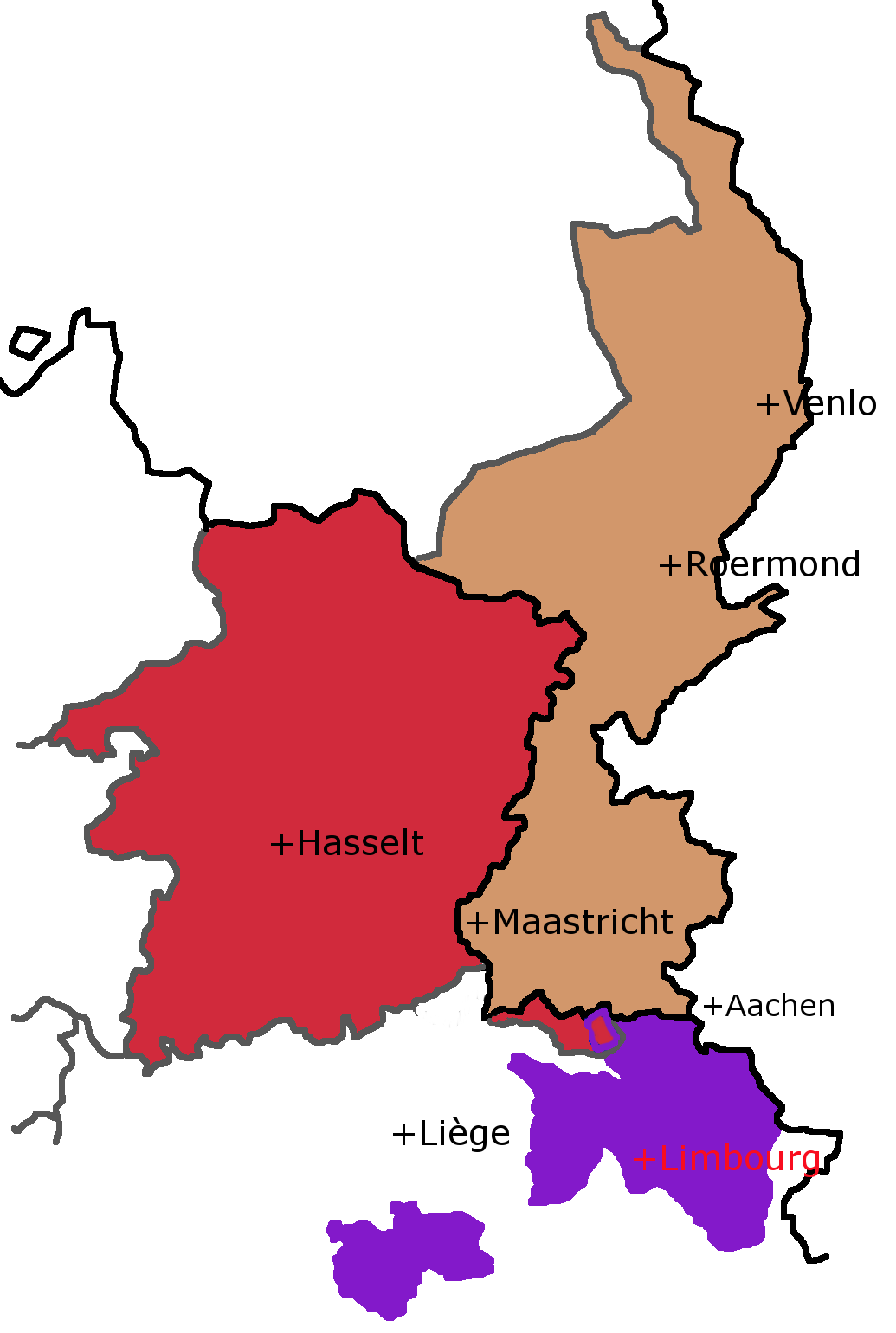|
Pey, Netherlands
Pey (also: ''Peij''; ) is a village in the Dutch province of Limburg. It is a part of the municipality of Echt-Susteren. It is located to the east of the Echt and is separated from Echt by the railway line. It is located about north of Sittard. History The village was first mentioned in 1403 as Pede, and means "swamp". The popular interpretation as peace is not correct. The official spelling of the village is Pey, but Peij is still often used. Pey is a road village which started to develop in the 19th century on the road from Echt to Waldfeucht, Germany. The Catholic Our Lady of Immaculate Conception Church is three aisled basilica church in Gothic Revival style. It was built between 1856 and 1861, and was designed by Pierre Cuypers. Between 1927 and 1928, annexes were added to the church and were designed by Joseph Cuypers. The war damage was repaired between 1947 and 1948. Pey was home to 434 people in 1840. It has formed a single urban area with neighbouring Echt. Even ... [...More Info...] [...Related Items...] OR: [Wikipedia] [Google] [Baidu] |
List Of Sovereign States
The following is a list providing an overview of sovereign states around the world with information on their status and recognition of their sovereignty. The 205 listed states can be divided into three categories based on membership within the United Nations System: 193 member states of the United Nations, UN member states, two United Nations General Assembly observers#Current non-member observers, UN General Assembly non-member observer states, and ten other states. The ''sovereignty dispute'' column indicates states having undisputed sovereignty (188 states, of which there are 187 UN member states and one UN General Assembly non-member observer state), states having disputed sovereignty (15 states, of which there are six UN member states, one UN General Assembly non-member observer state, and eight de facto states), and states having a political status of the Cook Islands and Niue, special political status (two states, both in associated state, free association with New ... [...More Info...] [...Related Items...] OR: [Wikipedia] [Google] [Baidu] |
Sittard
Sittard (; ) is a city in the Netherlands, situated in the southernmost province of Limburg. The town is part of the municipality of Sittard-Geleen and has almost 37,500 inhabitants in 2016. In its east, Sittard borders the German municipality of Selfkant (in the state of North Rhine-Westphalia). The city centre is located at 45 m above sea level. History Archaeological discoveries have dated the first settlement in the Sittard area around 5000 B.C. Present day Sittard is assumed to have been founded around 850 A.D. and to have been built around a motte. Sittard was first mentioned in 1157. It was granted city rights by the Duke of Limburg in 1243. In 1400 it was sold to the Duchy of Jülich, and remained in its possession until 1794. The city was destroyed and rebuilt repeatedly, due to fires and various conflicts during the 15th-17th century. It was a stronghold until it was largely destroyed in 1677, during the Franco-Dutch War. Under French occupation (1794-1814), Si ... [...More Info...] [...Related Items...] OR: [Wikipedia] [Google] [Baidu] |
Venlo
Venlo () is a List of cities in the Netherlands by province, city and List of municipalities of the Netherlands, municipality in southeastern Netherlands, close to the border with Germany. It is situated in the province of Limburg (Netherlands), Limburg. The municipality of Venlo counted 101,578 inhabitants as of January 2019.Statistics Netherlands (CBS), Retrieved on 6 March 2019. History Early history Roman and Celtic coins have been found in Venlo; it was speculated to have been the settlement known as ''Sablones'' on the Roman road connecting Maastricht with Xanten, but the little evidence there is concerning the location of Sablones speaks against this thought while there is no evidence in support of it. Blerick, on the west bank, was known as ''Blariacum''. Documents from the 9th century mention Venlo as a trade post; it developed into one of the more important ones in the Meuse-Rhine area, receiving City rights in the Netherlands, city rights in 1343, and becoming a m ... [...More Info...] [...Related Items...] OR: [Wikipedia] [Google] [Baidu] |
Maastricht
Maastricht ( , , ; ; ; ) is a city and a Municipalities of the Netherlands, municipality in the southeastern Netherlands. It is the capital city, capital and largest city of the province of Limburg (Netherlands), Limburg. Maastricht is located on both sides of the Meuse (), at the point where the river is joined by the Jeker. Mount Saint Peter (''Sint-Pietersberg'') is largely situated within the city's municipal borders. Maastricht is adjacent to the border with Belgium and is part of the Meuse-Rhine Euroregion, an international metropolis with a population of about 3.9 million, which includes the nearby German and Belgian cities of Aachen, Liège, and Hasselt. Maastricht developed from a Roman Republic, Roman settlement (''Trajectum ad Mosam'') to a medieval river trade and religious centre. In the 16th century it became a garrison town and in the 19th century an early industrial centre. Today, the city is a thriving cultural and regional hub. It became well known through ... [...More Info...] [...Related Items...] OR: [Wikipedia] [Google] [Baidu] |
Echt Railway Station
Echt is a railway station located in Echt, Netherlands. The station was opened in 1862 and is located on the Maastricht–Venlo railway. Train services is operated by Arriva Arriva Ltd. is a British multinational public transport company headquartered in Sunderland, England. The company was originally established on 24 October 1938 as T Cowie Ltd. Initially focused on the sale of motorcycles, it relaunched shortl .... Train services The following local train services call at this station: *''Stoptrein'': Maastricht Randwyck–Sittard–Roermond External linksNS websiteDutch Public Transport journey planner References Railway stations in Limburg (Netherlands) Railway stations in the Netherlands opened in 1862 Railway stations on the Staatslijn E Echt-Susteren {{Netherlands-railstation-stub ... [...More Info...] [...Related Items...] OR: [Wikipedia] [Google] [Baidu] |
Joseph Cuypers
Josephus Theodorus Joannes Cuypers (10 June 1861, Roermond – 20 January 1949, Meerssen) was a Dutch people, Dutch architect; primarily known for his Catholic churches. Life and work He was born to the architect, Pierre Cuypers, and his wife, Antoinette née Alberdingk, Alberdingk Thijm. His training began at his father's firm. Later he studied at the Delft University of Technology, graduating in 1883, and becoming his father's assistant. The following year, he created his first work, a pension (guest house) on Vondelstraat. His first design for a church, in Nes aan de Amstel, was completed in 1888. He also became involved in restorations, beginning with the Basilica of St Plechelm, in Oldenzaal. He married Delphine Marie Povel in 1889. They had three sons and two daughters. In 1893, he was commissioned to build the new Cathedral of St Bavo, Haarlem. The following year, he took over management of the family firm, when his father retired to Valkenburg aan de Geul. In 1898, he ... [...More Info...] [...Related Items...] OR: [Wikipedia] [Google] [Baidu] |
Pierre Cuypers
Petrus Josephus Hubertus "Pierre" Cuypers (16 May 1827 – 3 March 1921) was a Dutch architect. His name is most frequently associated with the Amsterdam Central Station (1881–1889) and the Rijksmuseum (1876–1885), both in Amsterdam. More representative for his oeuvre, however, are numerous churches, of which he designed more than 100. Moreover, he restored many monuments. Biography Cuypers was born in Roermond, the son of a church painter, and grew up in surroundings in which his interest for art was encouraged. After he studied at the urban college in Roermond, he moved to Antwerp in 1844 to study architecture at the Royal art academy. He was taught by Frans-Andries Durlet, Frans Stoop and Ferdinand Berckmans, all pioneers of the neo-Gothic architecture in Belgium. Cuypers was a good student; in 1849, he gained the ''Prix d'Excellence'' of the academy. After a tour in the German Rhineland, he returned to Roermond, where he was appointed a town architect in ... [...More Info...] [...Related Items...] OR: [Wikipedia] [Google] [Baidu] |
Gothic Revival
Gothic Revival (also referred to as Victorian Gothic or neo-Gothic) is an Architectural style, architectural movement that after a gradual build-up beginning in the second half of the 17th century became a widespread movement in the first half of the 19th century, mostly in England. Increasingly serious and learned admirers sought to revive medieval Gothic architecture, intending to complement or even supersede the Neoclassical architecture, neoclassical styles prevalent at the time. Gothic Revival draws upon features of medieval examples, including decorative patterns, finials, lancet windows, and hood moulds. By the middle of the 19th century, Gothic Revival had become the pre-eminent architectural style in the Western world, only to begin to fall out of fashion in the 1880s and early 1890s. For some in England, the Gothic Revival movement had roots that were intertwined with philosophical movements associated with Catholicism and a re-awakening of high church or Anglo-Cathol ... [...More Info...] [...Related Items...] OR: [Wikipedia] [Google] [Baidu] |
Waldfeucht
Waldfeucht ( ) is a German municipality in the Heinsberg district, in North Rhine-Westphalia, Federal Republic of Germany. It is situated on the border with the Kingdom of the Netherlands, approx. 15 km south of Roermond and 8 km west of Heinsberg. Geography Waldfeucht is located west of Heinsberg in the Selfkant natural area between the Wurm river in the east and the Meuse river in the west. To the west, the border between the Netherlands and Germany forms the municipal boundary over a length of about 10 km. The highest point in the community is 72.7 m above sea level, normalnull is located south of the "Breuner Maar" between Bocket and Breberen, the lowest point 31.7 m is in the Kitscher Bruch between the villages of Haaren and Karken on the municipal border. The municipal area extends 8.5 km north to south and it is 6.0 km from west to east. Population centers In addition to the town of Waldfeucht, these villages belong to the municipality: * ... [...More Info...] [...Related Items...] OR: [Wikipedia] [Google] [Baidu] |
Echt, Netherlands
Echt (; ) is a city in the Dutch municipality of Echt-Susteren in the province of Limburg, Netherlands. It was a municipality itself until it merged with the municipality of Susteren on 1 January 2003. The municipality of Echt had about 19,300 inhabitants and an area of about 75,13 square km. History First recorded in the 7th century, Echt was a village, then within the County of Loon. Between 928 and 939 Gerberga of Saxony gave the estate of "Ettha" and its church to the St Servatius community in Maastricht. In 1075/1076 Gerard I of Guelders, received the estate of Echt on loan from Albert III, Count of Namur and deputy duke of Lower Lorraine. However, a charter from Emperor Henry IV from 1087 gives a different picture of this donation: according to the Godschalk van Aken, Gerard I of Guelders is said to have illegally taken possession of the church of Echt ("Echta") ("invaserat"), while this belonged to the St. Servatius Chapter. By judgment of the imperial court o ... [...More Info...] [...Related Items...] OR: [Wikipedia] [Google] [Baidu] |
Netherlands
, Terminology of the Low Countries, informally Holland, is a country in Northwestern Europe, with Caribbean Netherlands, overseas territories in the Caribbean. It is the largest of the four constituent countries of the Kingdom of the Netherlands. The Netherlands consists of Provinces of the Netherlands, twelve provinces; it borders Germany to the east and Belgium to the south, with a North Sea coastline to the north and west. It shares Maritime boundary, maritime borders with the United Kingdom, Germany, and Belgium. The official language is Dutch language, Dutch, with West Frisian language, West Frisian as a secondary official language in the province of Friesland. Dutch, English_language, English, and Papiamento are official in the Caribbean Netherlands, Caribbean territories. The people who are from the Netherlands is often referred to as Dutch people, Dutch Ethnicity, Ethnicity group, not to be confused by the language. ''Netherlands'' literally means "lower countries" i ... [...More Info...] [...Related Items...] OR: [Wikipedia] [Google] [Baidu] |
Limburg (Netherlands)
Limburg (; ), also known as Dutch Limburg, is the southernmost of the twelve provinces of the Netherlands. It is bordered by Gelderland to the north and by North Brabant to the west. Its long eastern boundary forms the border with the German state of North Rhine-Westphalia. To the west is the border with the Belgian province of Limburg, part of which is delineated by the river Meuse. To the south, Limburg is bordered by the Belgian province of Liège. The Vaalserberg is the extreme southeastern point, the tripoint of the Netherlands, Germany, and Belgium. Limburg had a population of about 1,128,000 in January 2023. Its main municipalities are the provincial capital Maastricht (population 120,837 as of January 2022), Venlo (population 102,176) in the northeast, as well as Sittard-Geleen (population 91,760, bordering both Belgium and Germany) and Heerlen (population 86,874) in the south. More than half of the population, approximately 650,000 people, live in the south of Limb ... [...More Info...] [...Related Items...] OR: [Wikipedia] [Google] [Baidu] |






